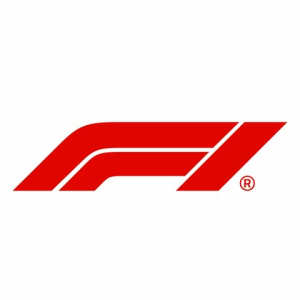17/08/2025 17:30
The story behind the Life F190 begins with Franco Rocchi, a
long-time Ferrari veteran, who had a vision for a new type of
engine: the W12. It was a relatively simple idea, on paper.
Rocchi, an engine man, died in the wool of Enzo's idea that the
horse should pull the cart, wanted the power of a V12, but in the
size and compactness of a V8. To achieve this, he simply put the
usual two blocks of four cylinders in the classic V-shape, and then
crowbarred in a third block in-between. The result? An engine he
claimed he nearly 15kg lighter than the equivalent Cosworth
offering, and the timing was perfect as F1 moved away from the
turbo-charged beasts of the mid-1980s. It was 1989, and the new
rules meant naturally-aspirated engines were required but there was
a split. The likes of Honda, Renault, and Ford all went for a V10
design, but Ferrari being Ferrari opted for the brute of a V12. It
was not until 1996 the Scuderia would ditch those extra two
cylinders. Rocchi had an engine but needed someone to bankroll its
development, and ideally a team to run it. Enter Ernesto Vita, an
Italian businessman, who no doubt thought he had stumbled on the
best 'quick rich quick' scheme he had ever seen. The only problem
was that no team was interested in this experimental engine, with
no testing and shaky foundations. So, Vita did what any reasonable
person in his position would do. Created his own F1 team from
scratch. There were no FIA expression of interest processes and
financial negotiations with the commercial rights holder (Bernie
Ecclestone) to navigate. The Birth of Life F1 In a further bid to
get on quickly with things, Vita decided against building an
in-house chassis, opting for to purchase one off the shelf from
First Racing, an F3000 team which had made an abortive attempt to
enter F1 for 1989. Its first chassis had a major defect after
being manufactured with a temperature defect in the autoclave, and
running repairs made it overweight, with a second chassis being
made up as a result. It was this second chassis Vita snapped up.
He had an engine, a chassis, but lacked one important ingredient:
the squishy, organic bit in the middle, which would actually drive
the car. With a skeleton crew, Gary Brabham, the son of three-time
world champion Sir Jack, was brought aboard, and after very limited
testing, everything was shipped off to Phoenix for the 1990
season-opener. With only 26 cars allowed to start any grand prix,
and with regularly 35-40 on the entry list, the early 1990s
featured 'pre-qualifying' on a Friday morning. Essentially, the
no-hopers were grouped in their own session to see who would
advance through to 30-car qualifying for the 26 grid slots, with
those who failed to pre-qualify earning a DNPQ on their record.
Brabham posted a 2:07.147 time, 5.7s slower than Claudio Langes in
front and 35.8s slower than pole-sitter Gerhard Berger's eventual
pole time, but remarkably, he was not the slowest as Bertrand
Gachot's gearbox cried foul and gave up in his Coloni. The comedy
of errors had begun. Brabham feared the team could fold before
round two in Brazil, where he completed 400m before the engine
failed. This was because the mechanics had gone on strike and not
filled the engine with oil as they had not been paid. The
Australian pleaded with Vita to ditch the W12 and move to a Judd V8
design. By no means powerful, but reliable and trustworthy. Vita
point-blank refused so Brabham left and went to F3000. From bad to
worse In Brabham's tracks came Bruno Giacomelli, the veteran
Italian who missed F1 and was deemedd a safe pair of hands. He
returned from round three at Imola, where he recorded a lap-time of
7:16.212 in pre-qualifying. This was because the oil and water
pumps broke, leaving Giacomelli stuck in third gear for the crawl
around the fast pre-1995 chicane-less Imola. At Monaco, he even
man-handled the car to within 14s of the fastest pre-qualifier and
nearly 20s behind Ayrton Senna's pole lap. The downfall Vita then
started to look for investors for his failing team, and in a stroke
of the opposite of a masterstroke, looked to the Soviet Union. The
USSR was in a state of what could be termed as 'collapse' following
the fall of the Berlin Wall in 1989, and so investment from behind
the Iron Curtain was probably not that secure. Predictably, it fell
through and by round 13 in Portugal, Vita finally allowed the Judd
V8 to be bolted in the back of the car. It did not have the
slightest effect whatsoever. After Estoril and the Spanish GP at
Jerez, Vita finally saw sense, and being gently nudged in the
direction by Ecclestone, folded the team. The early 1990s were a
ripe breeding ground for the likes of Life. Onyx, Andrea Moda,
Coloni, AGS, EuroBrun to name a few. Chancers, maybe; visionaries,
certainly; dreamers, possibly. All in over their heads as if they
were standing at the bottom of Challenger Deep in the Mariana
Trench. Absolutely.



